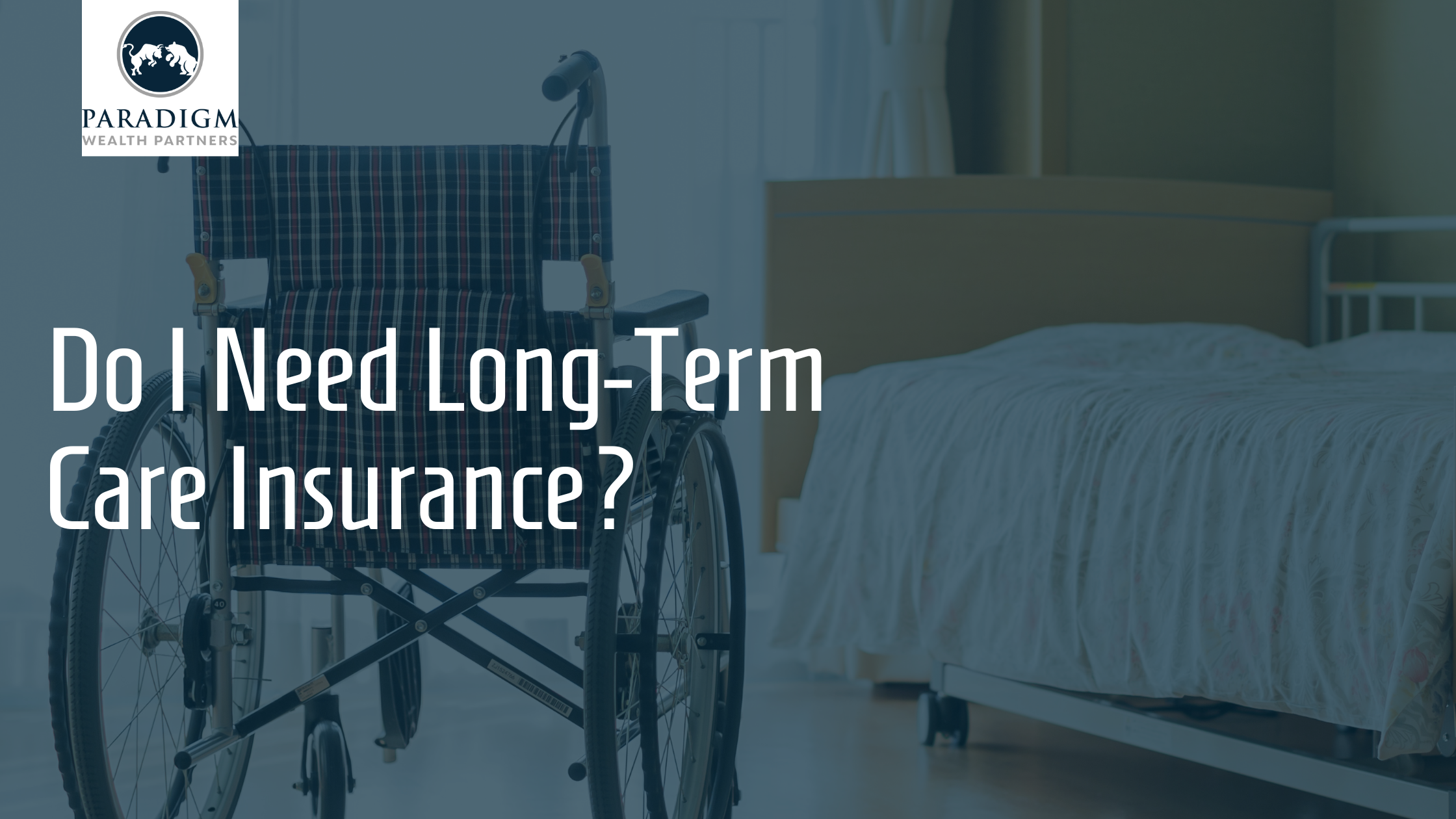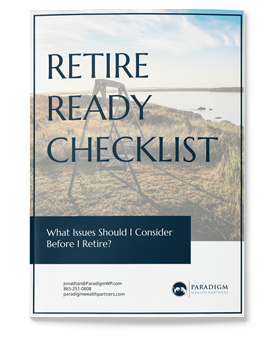Do I Need Long-Term Care Insurance?
While our lifespans continue to increase, there is a gap between lifespan and health span. Those who live longer often need more care than those who die younger. And that care is getting more and more expensive. Relative to the size of the economy, healthcare costs have skyrocketed from 5% of the GDP in 1962 to 17% in 2022.
These costs are a big risk to your retirement, so how can you protect yourself? Long-term care insurance may be a solution. We’ll break down the subject so you can decide if long-term care insurance is right for you.
Will You Need Long-Term Care?
While we all dream of a long, healthy retirement free of disease, pain, and illness, that is not the reality for the majority. Of those aged 65 and older, roughly 70% will need some kind of long-term care in their lifetime.
Long-term care includes unpaid caregivers, adult daycare centers, paid care, home care, and care provided in a nursing home or assisted living facility. Unpaid caregivers may be family or friends who provide some level of assistance, from minor things like doing errands to more intensive help with bathing and dressing. Home care can be provided by home health aids who, depending on their level of training, can assist with household duties, personal care, and medical aid like administering medication or tending to wounds.
While nursing home and assisted living are often used interchangeably, they are not the same thing. A nursing home provides 24-hour monitoring and high-level medical care, while assisted living facilities help residents with daily living. Some assisted living facilities offer “step-up” wings for residents who eventually need the level of care a nursing home offers.
The average person aged 65 and older will receive some form of long-term care for about three years. Over half, 55% of those in an assisted living facility are 85 or older. The annual mortality rate of nursing home residents is 32%, and the median survival rate is 2.2 years.
ADL and LTC Qualifications
A long-term care insurance policy begins paying benefits when the covered party suffers from cognitive impairment or is unable to perform at least two of the six activities of daily living (ADL) as long as the policyholder has met the elimination period. The elimination period is a waiting period between the time when an illness or disability begins and when they start to receive benefits.
During the elimination period, you will be responsible for any expenses related to your care. Most long-term insurance policies have an elimination period of 30, 60, or 90 days. A longer elimination period may reduce your premium costs.
ADLs are general activities necessary for independent living at home. The six ADLs are:
- Bathing
- Dressing
- Toileting
- Transferring (getting in and out of bed or a chair)
- Eating
- Continence
These are the typical steps involved when filing a claim for long-term care insurance:
- Contact the insurance company for a claim packet. Many companies allow these forms to be filled out online. These forms may include a policyholder statement, an attending physician statement, a nursing assessment and plan of care, a provider statement if you are already receiving care, and an authorization to release medical information.
- Attend a phone interview. The insurance company will typically contact you to review the claim packet information.
- Await the response. It takes about 30 days to process the claim.
- If your claim is approved, the insurance company will pay the facility or provider directly or reimburse you monthly for the covered expenses you pay out of pocket.
The Average Cost of Long-Term Care
Genworth is an insurance company based in Virginia that regularly publishes a cost-of-care survey. It’s a great tool. You can search by a specific location, look at estimates for future costs, and see costs broken down by the hour, day, month, or year.
These are the median costs for yearly care in Knoxville in 2024:
- Homemaker Services: $62,379
- Home Health Aide: $61,829
- Adult Day Healthcare: $19,888
- Assisted Living Facility: $50,123
- Nursing Home Semi-Private Room: $93,729
- Nursing Home Private Room: $99,711
You can see how the cost of long-term care could quickly drain even robust retirement savings.
When to Buy Long-Term Care Insurance
If you want to help protect your retirement, long-term care insurance can go a long way in doing so. But when is the best time to buy it? Waiting too long can mean paying higher premiums or being deemed ineligible for coverage. Long-term care insurance is not subject to the same rules as traditional health insurers regarding refusing coverage based on pre-existing conditions under the Affordable Care Act. Buying too early can mean paying expensive premiums for much longer than necessary.
According to the American Association for Long-Term Care Insurance (AALTCI), the majority of those taking out long-term care insurance are between the ages of 55 and 64. The majority of claims are filed when people are in their 70s or 80s. Some 30% of applicants in their 60s are refused coverage, while about 20% of those in their 50s are turned down.
The sweet spot seems to be the early 50s. Each time you reach another birthday in your 50s, the annual premium for long-term care insurance typically increases about 2 to 4%. Once in your 60s, premiums increase from 6 to 8% annually.
Waiting to buy coverage until you’re 65 may mean paying more than twice the premiums for the same coverage if you’d purchased it at 55. Even paying for premiums for a longer period can save you money compared to the cost of waiting.
Options for Covering Long-Term Care
As you can see, long-term care is expensive, and most of us will not be able to pay for it entirely out of pocket. Luckily, there are several options to help you cover the costs.
Traditional Long-Term Care Policy
Traditional long-term care insurance helps cover expenses not covered under regular health insurance, including Medicare and Medigap, for those who need help with ADLs or are suffering from cognitive impairment.
Pros
- Coverage for long-term care expenses: LTC insurance helps cover the costs of long-term care services, including nursing home care, assisted living facilities, in-home care, and adult day care.
- Asset Protection: Having LTC insurance helps protect your retirement savings and other assets from being depleted by the expense of long-term care.
- Choice: LTC insurance offers the flexibility to choose where to receive care, at home or in a facility.
- Peace of Mind: Having LTC insurance gives peace of mind to you and your family as it alleviates the worry over how to afford long-term care.
Cons
- Cost: LTC insurance premiums can be expensive, particularly if you wait too long to buy coverage.
- Underwriting Requirements: To be eligible for LTC coverage, you may be required to meet certain health criteria. Pre-existing conditions or other health issues can mean higher premiums or being denied coverage.
- Limited Benefits: LTC policies often have limitations on coverage, like waiting periods, maximum benefit periods, and restrictions on what services and facilities are covered.
- Unused Benefits: As with any kind of insurance, you may never need what LTC insurance covers or only need minimal care. In this case, paying the premiums can seem like money wasted.
- Impact of Inflation: Without inflation protection, your policy’s benefits may not keep pace with the increasing costs of long-term care services, which could leave you underinsured in the future.
Hybrid Long-Term Care Policy
A hybrid long-term care policy is an insurance product that combines elements of a traditional LTC insurance policy and life insurance or annuities.
Pros
- Long-Term Care Coverage: Like traditional LTC insurance, hybrid policies provide coverage for long-term care expenses.
- Death Benefit: If you don’t end up needing long-term care, hybrid policies typically offer a death benefit to your beneficiaries, similar to a life insurance policy.
- Potential for Premium Refunds: Some hybrid policies offer a return of premiums feature that gives you a portion of your premiums back if you cancel the policy or die without using the LTC benefits.
- Inflation Protection Options: Many hybrid policies offer inflation protection riders that allow you to increase the benefit amount over time to keep pace with the increasing cost of long-term care.
- Simplified Underwriting: Hybrid policies often have less stringent underwriting requirements than traditional LTC insurance policies, making them more accessible for those with pre-existing health conditions.
- Flexible Payment Options: Hybrid policies may offer flexible payment options, allowing the premiums to be paid in a lump sum or over a specified period of time.
Cons
- Higher Initial Premiums: Hybrid LTC policies typically have higher initial premiums than traditional LTC insurance policies. This is because they combine both LTC coverage and life insurance or annuity benefits into a single policy.
- Limited Death Benefit: While hybrid policies offer a death benefit, it may be lower than what you would receive from a standalone life insurance policy, especially if you’ve used some of the LTC benefits.
- Complexity: Hybrid policies can be complicated, with various features and riders that might be hard to understand. Be sure to understand how your coverage works before making a decision.
- Tax Implications: While the LTC benefits received from hybrid policies are typically tax-free, there may be tax implications associated with the death benefit or any investment gains within the policy.
Life Insurance with an LTC Rider
A life insurance policy with an LTC rider is a type of insurance product that combines the benefits of traditional life insurance with coverage for long-term care expenses.
Pros
- Dual Purpose: Combining life insurance with a long-term care rider provides coverage for both end-of-life expenses and potential long-term care needs.
- Asset Protection: Your assets are protected from the expense of long-term care.
- Stable Premiums: Premiums for life insurance policies with LTC riders may be more stable than standalone long-term care insurance policies, as they’re often locked in at the time of purchase and not subject to rate increases.
- Tax Benefits: Depending on how the policy is structured and local regulations, some premiums or benefits may be tax-deductible or tax-free.
Cons
- Cost: Policies with LTC riders can be more expensive than traditional life insurance policies due to the additional coverage they provide.
- Complexity: The integration of life insurance and long-term care benefits can make the policy more complicated, and it can be challenging to understand all of the terms and conditions.
- Reduced Death Benefit: Accessing the long-term care benefits may reduce the death benefit available to your beneficiaries.
- Underwriting: Qualifying for a policy with an LTC rider may require stricter underwriting standards, which could mean higher premiums or denial of coverage for those with pre-existing conditions.
Self-Insuring
Self-insuring means setting aside money to pay for long-term care expenses out of pocket. It doesn’t necessarily mean cash; you can self-insure through your HSA, IRA, 401(k), or brokerage investments.
Pros
- Flexibility: Self-insuring gives you flexibility in how you manage and use your assets. You’re not tied to the restrictions or limitations of an insurance policy.
- No Premiums: You won’t have any premiums to pay, which can be expensive, especially as you age or if you have a pre-existing condition.
- No Denial of Benefits: When you self-insure, you can’t be turned down for coverage based on your age or pre-existing conditions.
- Potential Investment Growth: If you invest the money for your long-term care, there is potential for growth, which can give you more resources to cover that care.
- No Rate Increases: You avoid this risk when you self-insure.
Cons
- High Cost of Care: Long-term care is expensive, especially if you need it for an extended period of time. Without insurance, you’re solely responsible for covering the costs, which could deplete your assets.
- Uncertain Future Needs: There is no reliable way to predict how much long-term care you might need or how much it will cost. Self-insuring requires setting aside substantial assets for a significant amount of time to make sure you can afford any care you may need. Not setting aside enough can mean running out of money to fund your care.
- Missed Tax Benefits: Long-term care insurance premiums may be tax-deductible, providing potential tax benefits you won’t receive when you self-insure.
- Impact of Inheritance: If your assets are depleted to pay for your long-term care, it will impact the inheritance you planned to leave to your heirs.
What’s Right for You?
Having some form of long-term care insurance is one of the best tools to protect your retirement and heirs. If you would like to discuss the best option for your situation or any other aspect of financial or retirement planning, reach out to us.



